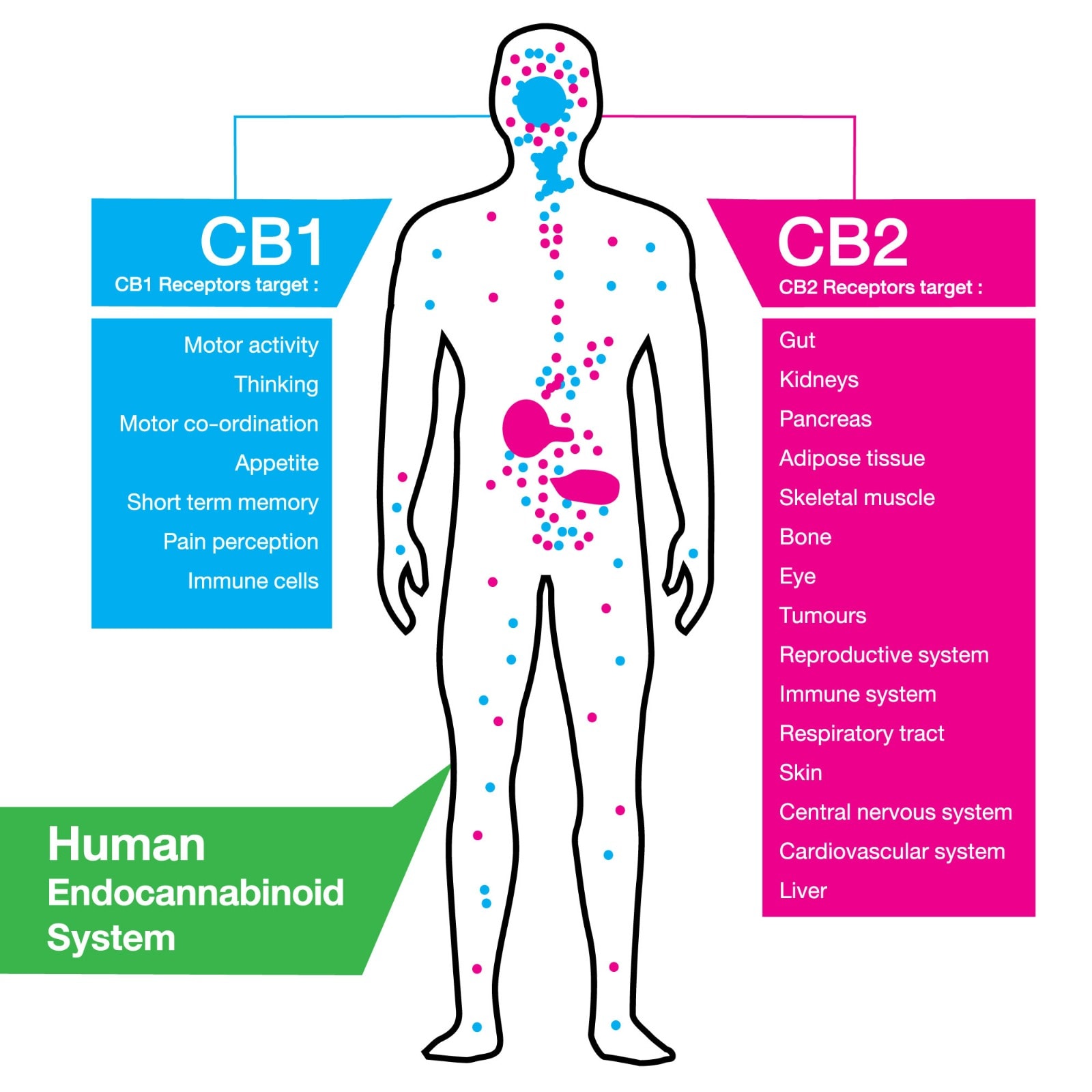Oct 13, 2020
The Endocannabinoid System

Endocannaba-what?
Even most common smokers have probably never even heard about the Endocannabinoid system and what it does. We are all born with one but what does it have to do with cannabis?
We all have an amalgamation of different systems working away inside us constantly, regulating needs and emotions and senses, etc. Each system uses different chemicals to send signals with immeasurable results within your entire body. Chemicals like serotonin, dopamine, adrenaline and even cannabinoids. Yes that’s right, our bodies produce cannabinoids naturally. The CB1 and CB2 receptors in our body use endocannabinoids like anandamine and 2-AG to regulate many different functions that scientists have only begun to scratch the surface on.
So, we are part cannabis?
Whether it’s coincidence, evolution or fate, somehow the exocannabinoid THC just so happens to work as a partial antagonist almost as well as the endocannabinoids that your body makes naturally.
You could spend several university courses digging into the whys and the hows of synaptic inhibition and pruning but all the casual user really needs to know is that this system is responsible for a generous amount of effects caused by cannabis and like any other system in your body, it’s susceptible to wear and tear.
Cannabis effectiveness can diminish
Constantly triggering your receptors with external sources can build up a tolerance caused by a process called down regulation. This is where your body receives too large of an input for too long which adds a phosphate group to one part of the receptor and they start to go into a dormant state. This is why over time the more THC you consume, the more you need to consume to achieve the same results.
Time for a TBreak
The TBreak, or Tolerance Break, is basically just going cold turkey for a week or two until your body starts turning on those receptors again, a process called upregulation. That way, after a long enough period of time, when you smoke again, all your receptors will be back on and the input won’t have to be as large to achieve the same effect. This is where you have to be very careful, if you were smoking 2-3 bowls right before you went on your TBreak, you do not want to be doing the same thing now that your system is running at full capacity again, going low and taking it slow is important at the point even for long time smokers.
What might be right for you, might not be right for some
Just like all the other systems, and organs, and structures, All humans are different. Since the effects caused by cannabis are just as dependent on your individual body chemistry as it is on the cannabis you are ingesting, there is no real way to predict what a strain will do for you. Remember to keep your strain journal!
Very often a new user will search out a new strain based on it’s effects, one very common request is Euphoria for example. Euphoria is caused by dopamine and the dopaminergic system which doesn’t really interact directly with the endocannabinoid system. It does, however, act indirectly through an acid called GABA.
- Cannabis is a GABA (Gamma Aminobutyric Acid) suppressant
- GABA is the way your body regulates your dopamine levels and prevents them from going overboard
- Similar to the way it interacts with leptin, cannabis will clog up your system and lessen the effectiveness of your GABA system
In a nutshell
What this means is that if your body isn’t creating any dopamine in the first place, it doesn’t matter how much GABA is suppressed, you’re not going to feel euphoric. That’s why the same product can produce different results when consumed days and sometimes even hours apart.
Cannabis can make you happier if you are already happy, but it can’t always be relied on to produce spontaneous happiness on its own.
Too much science?
Ultimately it’s not really something the average consumer needs to know anything about but cannabis and curiosity go hand in hand. If you want to know why cannabis does what it does, this is a good place to start your research.
